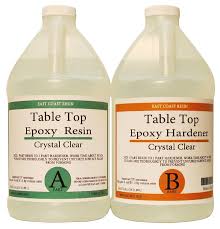Different Fabric Performs Used For Making Textile Composites
Fabric Performs with Textile Composites
In the technical
textile manufacturing process we can see there are two varieties of composites and
they are,
·
Fiber and resin
composites
·
Fabric performs based
composites
In previous questions I
have explained how long and short fibers are used to create textile composites
and in this question here I hope to explain different category of fabrics, properties
and method and construction steps of composites.
To develop textile
composites in the textile industry used 2D and 3D fabric structures. Under
these two categories used knitted, woven, non-woven and braid fabrics to
produce composites.
2D
Fabrics
·
Woven Fabrics
- Woven fabric has two interlacing points weft and warp based structure and woven
fabrics are twofold and they are biaxial and triaxial weaving. Woven fabric has
higher strength, higher breaking load, higher tearing points and dimensionally
stable fabrics. Therefore applying glass or carbon composites, manufacturer can
obtain lightweight and higher strength properties of produced composites. And
it is commonly used to aerospace and marine applications.
·
Braided Textiles
- Braided fabrics has inter combined two sets of yarns but not only woven,
braided fabric has well analyzed axial yarns. And this types of textile
material stronger than woven fabrics. Hence used for aircraft applications.
·
Knitted Fabrics
- One set of yarns interloping is simply known as knitted structure. Knitted
fabrics are basically formed by two basic techniques and they are weft knitting
structures and warp knitting structures. Knitted garments haves specific
properties such as high stretchability, bulky appearance, hygiene aspects.
Therefore knitted composite application used some home applications and some
cloth accessories.
Basically there are
three types of manufacturing processes can be seen in the textile industry and
they are resin transfer moulding process, wet lay-up process and vacuum bagging
process.
3D
Fabrics
In the two dimension
fabric, that we have seen only length and width in the fabric but in the three
dimension textiles have length, width and specific depth.
Three Dimensional Woven Fabrics -
In the technical textile industry, 3D woven fabrics play an important role in
the development of advanced fiber reinforced composites. They are used as
performed shapes redy for resin impregnation or as thick materials with
structural integrity and, which when resonated have good interlayer shear
strength and thereby outperform conventional laminated products. To produce
three dimensional weaving fabrics there are two methods employed.
·
Interlaced 3D Fabrics – Non- interlaced
3D fabric requires three sets of yarns and they are a multilayer warp (z-
direction), weft (x- direction) and a binder warp (y- direction).And following
picture will represent that concept.
·
Non-Interlaced 3D Fabrics – Non-
interlaced fabric requires three sets of yarns and these are a multilayer warp (z-
direction), weft (x- direction) and binder warp (y- direction). And following
pictures will help to understand that concept.
Orthogonal Nonwoven Fabrics-
This is also non-woven category and development based fabric and it has higher
strengths and mechanical properties after applying with composites. When we
assumed basic cell of orthogonal nonwoven fabrics we can draw structure as
below picture.
3D Knitted Fabrics
– This type of fabric also formed with weft or warp knitting processes. With
formation composites with 3D knitted fabrics can be increased strength and
mechanical properties than 2D knitted composites and 3D knitted composites are
stretchable than other 3D composite products. For example can be given 3D
knitted and Aramid composite used for helmets and this product has best configure
and best strength.
3D Braided Fabrics
– 3D braided fabrics manufactured different methods such as intertwining,
orthogonal, etc. Unique features can be explained as fabric can be formed over
complex shaped mandrel, yarn feed on demand, improved fracture toughness,
decreased sensitivity to holes, etc. braided composites have higher mechanical
properties than woven composites. Construction step of 3D braided fabrics can
be explained as given below picture.
List
of references
Books:
·
Asian Textile Journal, September 2006,
volume 15, no-7-9, Page 89-94
·
Non-Woven and Geotextile, January 1988
Web:
·
Google Inc (22.03.2017), Picasa Web
Album [picasaweb.google.com]
·
Google Inc (22.03.2017), Search Images
[www.google.com]
·
Google Inc (23.03.2017), E-Books [www.google.com]
· Comfe Designs (23.03.2017), 10 Things
You Should Know About 3D Knitting [cofedesigns.com]
